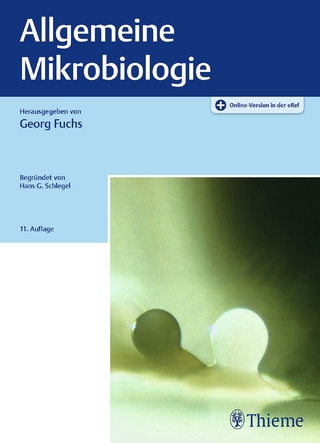
Vaccinia Virus and Poxvirology
Humana Press Inc. (Verlag)
978-1-61737-437-1 (ISBN)
The Right Book at the Right Time The poxviruses comprise a family of complex DNA viruses that replicate in the cytoplasm of vertebrate or invertebrate cells. Of the eight recognized g- era of vertebrate poxviruses, those belonging to the orthopoxvirus genus have been most intensively studied. This group includes variola virus, the agent of smallpox, as well as cowpox virus and vaccinia virus. Jenner’s original sma- pox vaccine, described in 1798, consisted of live cowpox virus, but vaccinia virus later replaced it (1). There has been speculation as to the origin of v- cinia virus; the most likely idea is that it is a separate species, possibly ori- nally isolated from a horse, and is now extinct or rare in nature (2). Recent genome sequencing studies confirm the distinctness of variola virus, cowpox virus, and vaccinia virus and also their very close genetic relationship, which accounts for the cross protection of smallpox vaccines. The novelty of the smallpox vaccine can be readily appreciated by the time it took, about 80 years, before the next live vaccine against rabies was developed, and another 50 years for the yellow fever vaccine. Moreover, the eradication of smallpox in 1977 stands as a unique medical achievement. Because of its historical role, sma- pox vaccination contributed greatly to present concepts of infectious disease, immunity, and pathogenesis. Less well known, however, are the many other “firsts” for vaccinia virus.
Working Safely with Vaccinia Virus.- Construction and Isolation of Recombinant Vaccinia Virus Using Genetic Markers.- Construction of Recombinant Vaccinia Virus.- Transient and Inducible Expression of Vaccinia/T7 Recombinant Viruses.- Construction of Recombinant Vaccinia Viruses Using Leporipoxvirus-Catalyzed Recombination and Reactivation of Orthopoxvirus DNA.- Construction of cDNA Libraries in Vaccinia Virus.- Construction and Isolation of Recombinant MVA.- Growing Poxviruses and Determining Virus Titer.- Rapid Preparation of Vaccinia Virus DNA Template for Analysis and Cloning by PCR.- Orthopoxvirus Diagnostics.- An In Vitro Transcription System for Studying Vaccinia Virus Early Genes.- An In Vitro Transcription System for Studying Vaccinia Virus Late Genes.- Studying Vaccinia Virus RNA Processing In Vitro.- Methods for Analysis of Poxvirus DNA Replication.- Studying the Binding and Entry of the Intracellular and Extracellular Enveloped Forms of Vaccinia Virus.- Pox, Dyes, and Videotape.- Interaction Analysis of Viral Cytokine-Binding Proteins Using Surface Plasmon Resonance.- Monitoring of Human Immunological Responses to Vaccinia Virus.- Vaccinia Virus as a Tool for Immunologic Studies.- Mouse Models for Studying Orthopoxvirus Respiratory Infections.- Viral Glycoprotein-Mediated Cell Fusion Assays Using Vaccinia Virus Vectors.- Use of Dual Recombinant Vaccinia Virus Vectors to Assay Viral Glycoprotein-Mediated Fusion with Transfection-Resistant Primary Cell Targets.- Poxvirus Bioinformatics.- Preparation and Use of Molluscum Contagiosum Virus from Human Tissue Biopsy Specimens.
| Erscheint lt. Verlag | 10.11.2010 |
|---|---|
| Reihe/Serie | Methods in Molecular Biology ; 269 |
| Zusatzinfo | XX, 396 p. |
| Verlagsort | Totowa, NJ |
| Sprache | englisch |
| Maße | 152 x 229 mm |
| Themenwelt | Naturwissenschaften ► Biologie ► Mikrobiologie / Immunologie |
| ISBN-10 | 1-61737-437-7 / 1617374377 |
| ISBN-13 | 978-1-61737-437-1 / 9781617374371 |
| Zustand | Neuware |
| Informationen gemäß Produktsicherheitsverordnung (GPSR) | |
| Haben Sie eine Frage zum Produkt? |
aus dem Bereich


